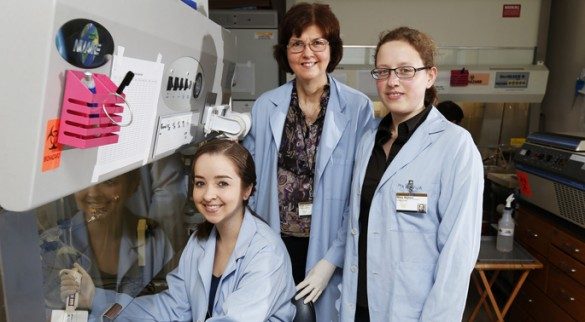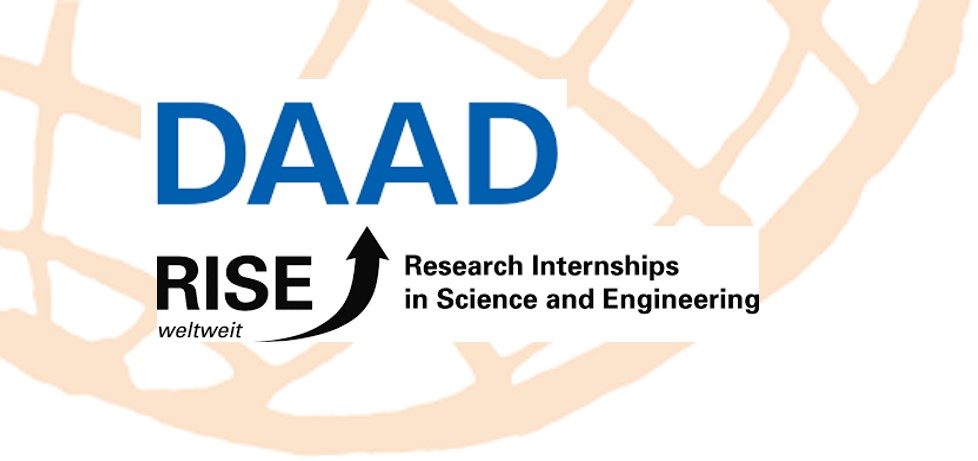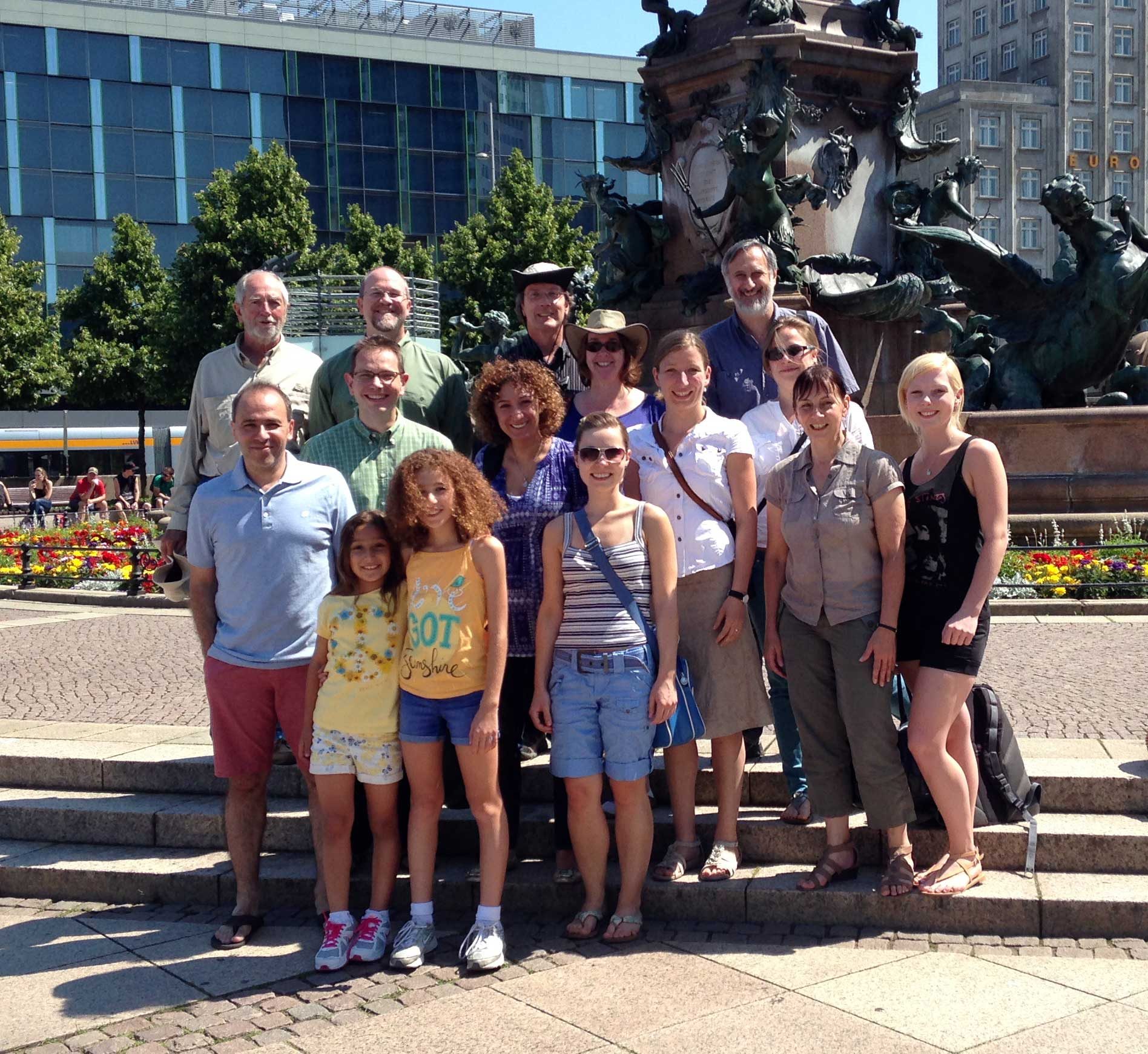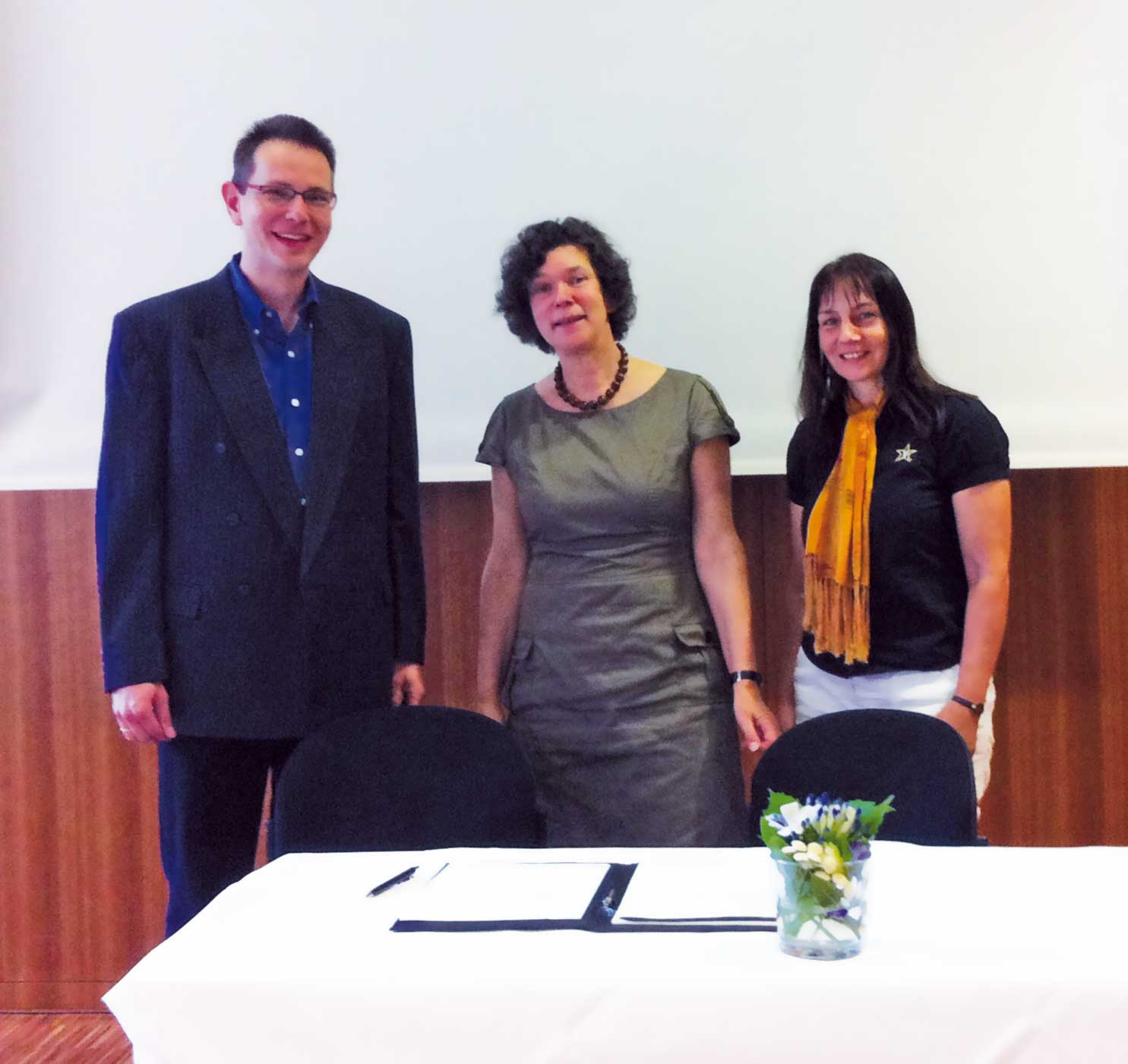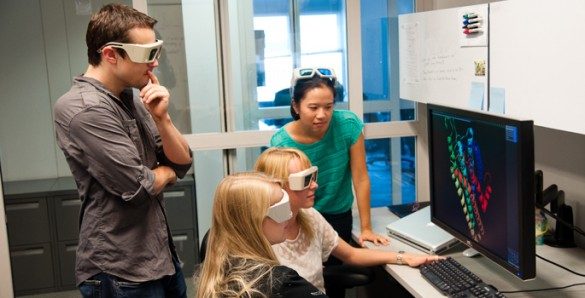written by Matt Windsor: During the past two weeks, the fifth international symposium between Leipzig and Vanderbilt universities was held on the Vanderbilt campus, as seven Leipzig faculty members presented a series of chemical biology-related lectures. The symposium offered an opportunity to highlight the ongoing success of the international collaboration. To date, there have been 17 joint publications between research groups at the two universities. This summer, the first federally funded research grant resulting from the collaboration was awarded by the National Institutes of Health (NIH). The project is aimed at developing drugs for a specific type of protein known as a G protein-coupled receptor (GPCR). The grant was spearheaded by
by Dr. Stefan Kalkhof, Prof. Dr. Martin von Bergen and Prof. Dr. John McLean: In an one-week curse 30 PhD students and postdocs of the Vanderbilt University were introduced to modern mass spectrometry methods and recent technical developments. The participants were made familiar with the theory of H/D exchange, ion mobility, chemical crosslinking, and labeling techniques using chemicals or radicals. Furthermore, to give the participants a better feeling concerning the potential as well as advantages, experimental challenges, and limitations many own projects and experimental protocols were presented and critically discussed. Finally, a session was used to discuss how one could practically utilize the techniques to answer current questions of participant`s projects.
by Hannah Berke (undergraduate student at Vanderbilt University): My two months spent in Leipzig were a wonderful experience. The work in the lab was informative and enjoyable and living in Leipzig changed my life. My stay in Leipzig was extremely fun and gave me the opportunity to travel and experience Europe and Germany specifically. The city itself is a perfect size, very similar to Nashville, and I lived in an area that was about a 5 minute tram ride or 20 minute walk from the city center, or “Mitte,” that is full of shops and restaurants. The abundance of parks and cafes made it easy to spend time outside – barbecuing,
The German Academic Exchange Service (Deutscher Akademischer Austauschdienst, DAAD) announced a new call for its program “Research Internships in Science and Engineering” (RISE) for summer internship in 2014. The program works in both ways. German and American Ph.D. students submit internship offers for undergraduates students for a duration of 8 to 12 weeks. German bachelor students can work as research interns at U.S. universities and U.S. undergraduates can work in labs of German universities. The DAAD provides stipends to help cover living expenses, the partner universities and research institutes provide housing assistance. The call is applicable for all fields of biology, chemistry, physics, earth sciences and engineering. Please visit for further
Annette Beck-Sickinger and Torsten Schoeneberg from Leipzig University and Jens Meiler from Vanderbilt University receive a grant “Ensemble Docking Interrogates Structural Determinants of Ligand-Protein Interactions” that is jointly funded by the National Science Foundation (NSF) and the Deutsche Forschungsgemeinschaft (DFG). The grant will develop a novel docking algorithm that leverages Structure-Activity-Relations (SAR) and apply this algorithm to understand regulation of G-Protein Coupled Receptors (GPCRs). Project Summary
The 4th international scientific symposium was held with members of the Leipzig University and Vanderbilt University from the 6th to the 12th of July 2013 in Leipzig. The focus of this event taking place at the Biotechnological-Biomedical Center (BBZ) of the University of Leipzig was the further organization and consolidation of the university partnership (MOU) between Leipzig and Vanderbilt University. Likewise this event was set out to be a Kick-Off-Meeting for two new international junior research groups, which are funded by the State Ministry of Science and Arts through the European Social Fond (ESF) since July 1st. The fourth cooperation workshop (scientific symposium) is linked to the plans of the Leipzig
Two new grants and a summer symposium with workshops highlight ongoing collaboration efforts between Vanderbilt University and Leipzig University: 1) Vanderbilt University received a grant from the Max Kade Foundation in support of an undergraduate and graduate student exchange program in collaboration with Leipzig University. The collaboration is spearheaded by Drs. Jens Meiler (Vanderbilt University) and Annette Beck-Sickinger (Leipzig University). 2) The Meiler and Weaver laboratories at Vanderbilt University received a grant from the National Institute of Diabetes and Digestive and Kidney Diseases (NIDDK, NIH) for the development of “Small Molecule Probes to Investigate Structure and Function of Y Receptors.” This project is a collaboration with Annette Beck-Sickinger at Leipzig University,
Prof. Dr. Terry Lybrand, Vanderbilt University Nashville, USA 10. – 12. July 2013, Leipzig University Course description: This short course will cover basic background information and applications details for molecular mechanics calculations, including energy minimization and molecular dynamics simulations. Some basic theory will be presented, but the course will focus primarily on practical details for molecular mechanics calculations and will include numerous “hands-on” exercises, i.e., the students will get the opportunity to perform all necessary steps for typical calculations. We will discuss the capabilities and limitations of different types of calculations, the information required to perform useful calculations, and analysis techniques to allow you to extract useful information from these calculations.
15. – 18. July 2013, Leipzig University Prof. Dr. Hassane Mchaourab, Vanderbilt University Nashville, USA Course description: This is an advanced, intensive course directed at graduate students. It is intended to provide an overview of the EPR spectroscopy and its application to protein biophysics. Electron paramagnetic resonance is a magnetic resonance technique for the analysis of naturally occurring or introduced free radicals. In protein spin labeling, a stable free radical, spin label, is introduced specifically into the protein sequence via site-directed mutagenesis. The lectures will describe the technical and biochemical aspects of protein spin labeling, discuss the spectral parameters that are determined from EPR analysis of spin labeled proteins and their
by David Salisbury | posted at news.vanderbilt.edu: In 2007, while Jens Meiler was visiting his parents in Germany, the associate professor of chemistry was invited to give a lecture at his alma mater, the University of Leipzig. “When I gave that talk on my research in structural and chemical biology, I found a tremendous amount of interest in what we are doing at Vanderbilt and learned that there is a great deal of complementary research going on in Leipzig,” Meiler said. In fact, Meiler stirred up so much interest that two years later Annette Beck-Sickinger, professor of biochemistry and bioorganic chemistry at Leipzig, spent her sabbatical at Vanderbilt. During her visit

